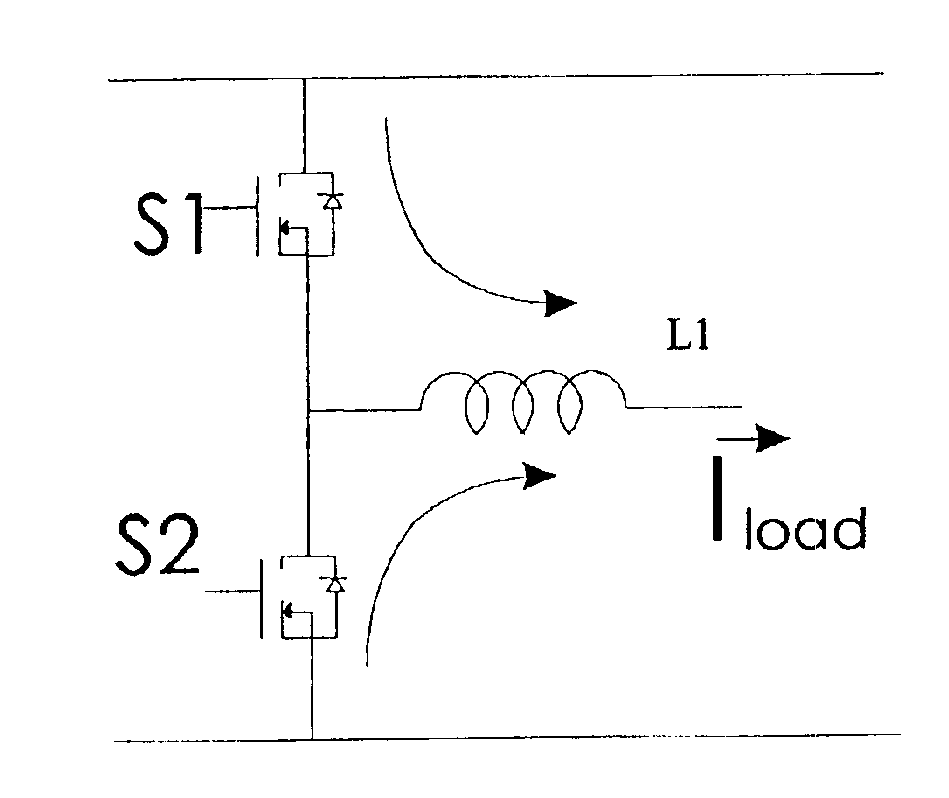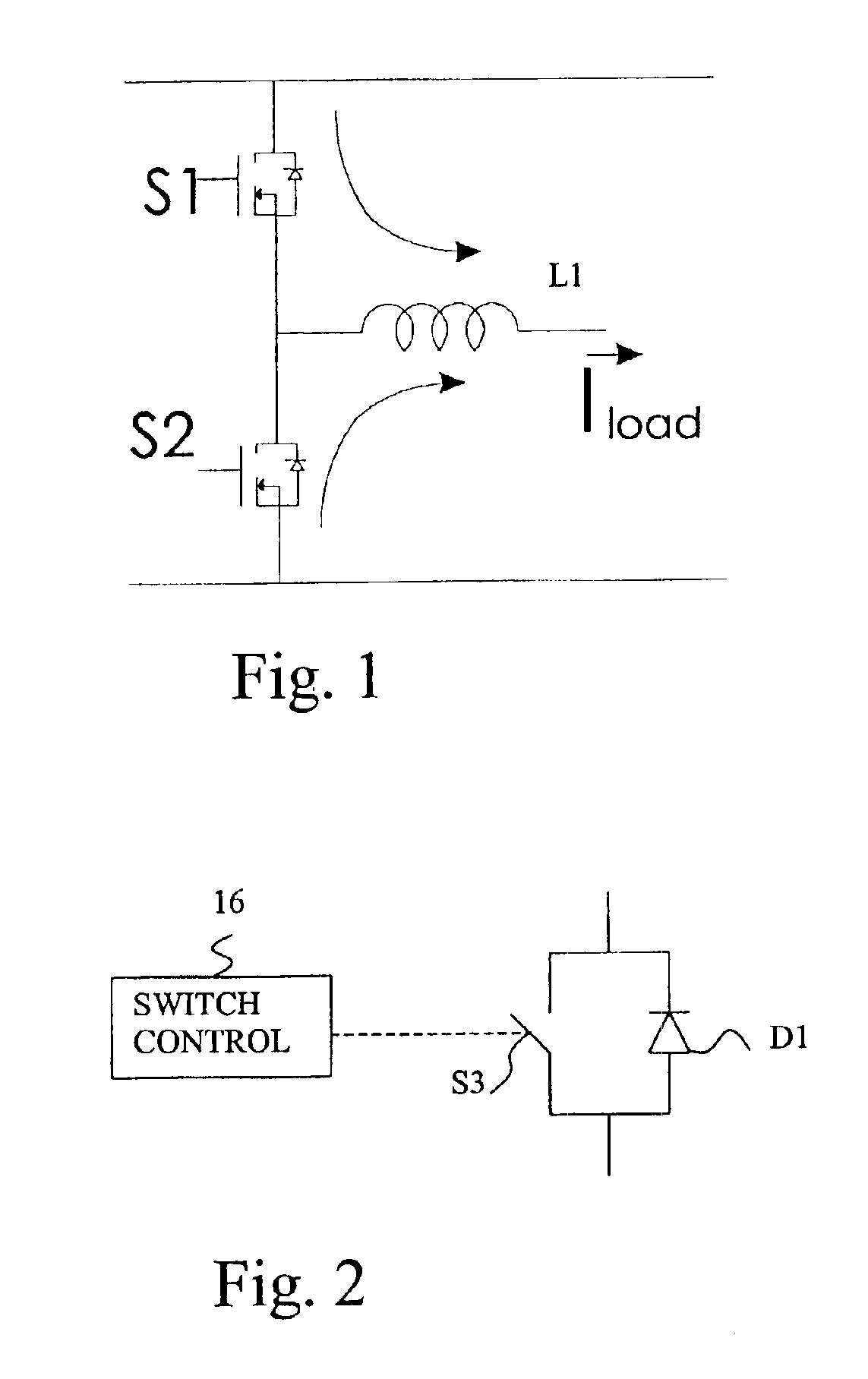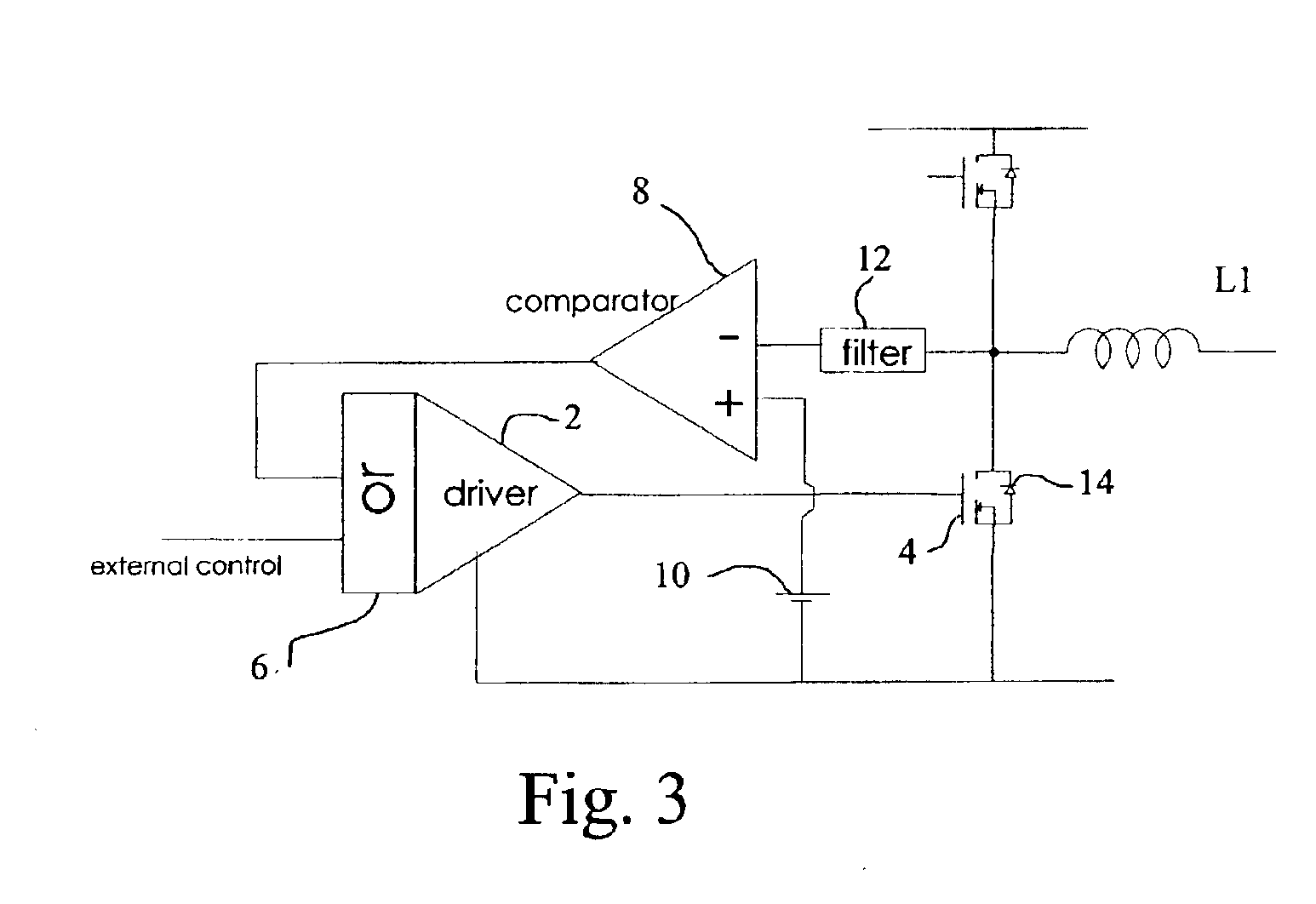Synchronous rectification for low voltage motor drive
a low-voltage motor and synchronous technology, applied in the direction of electric variable regulation, process and machine control, instruments, etc., can solve the problems of reducing power dissipation, affecting the operation of the controller, and affecting the control of the switch, so as to improve the sensitivity of the circuit, enhance the operation of the circuit, and reduce the forward voltage drop of current
- Summary
- Abstract
- Description
- Claims
- Application Information
AI Technical Summary
Benefits of technology
Problems solved by technology
Method used
Image
Examples
Embodiment Construction
[0012]The present invention is shown in FIGS. 3 and 4, where the MOSFET driver 2 has the required intelligence to be able to autonomously turn the MOSFET 4 ON or OFF to take advantage of synchronous recirculation.
[0013]An OR circuit 6, a comparator 8, a reference voltage 10 and filter 12 are used with the driver to achieve the synchronous rectification function. It should be apparent that filter 12 varies depending upon the application, and may be eliminated altogether.
[0014]The function of additional elements is to turn MOSFET 4 ON when the voltage across it is below a preset reference voltage (in FIG. 2, reference voltage 10) which could be a low positive (about 0.5 v) or negative. This method takes advantage of the fact that the voltage across MOSFET 4 is low and in fact negative when the body diode 14 of MOSFET 4 is conducting. When comparator 8 senses that the voltage across MOSFET 4 has become negative, it concludes that diode 14 is ON and then turns ON the MOSFET channel. The...
PUM
 Login to View More
Login to View More Abstract
Description
Claims
Application Information
 Login to View More
Login to View More - R&D
- Intellectual Property
- Life Sciences
- Materials
- Tech Scout
- Unparalleled Data Quality
- Higher Quality Content
- 60% Fewer Hallucinations
Browse by: Latest US Patents, China's latest patents, Technical Efficacy Thesaurus, Application Domain, Technology Topic, Popular Technical Reports.
© 2025 PatSnap. All rights reserved.Legal|Privacy policy|Modern Slavery Act Transparency Statement|Sitemap|About US| Contact US: help@patsnap.com



